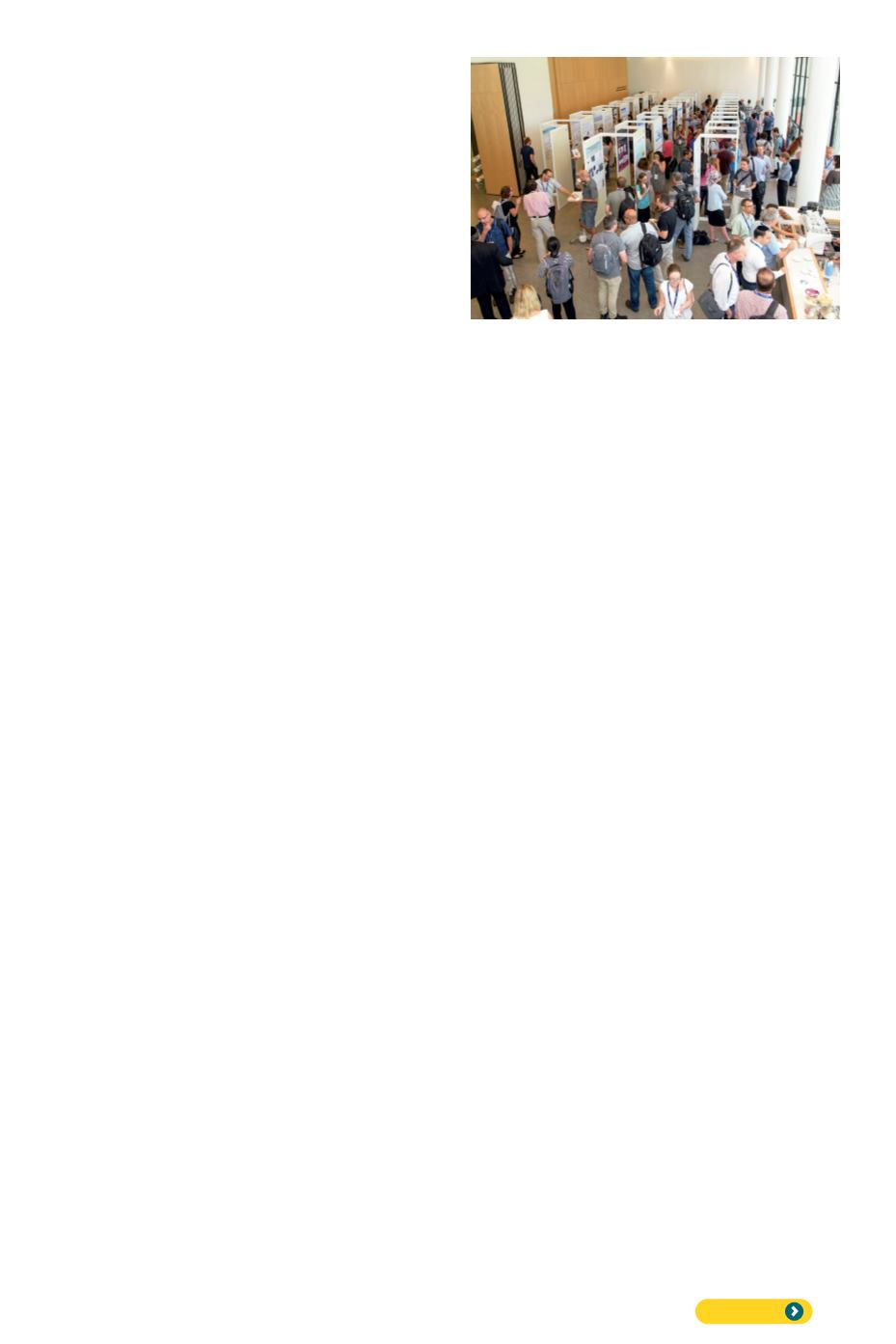

117
The growth and development of the IVS over the
years has been both in numbers, and in extent
and variety of activities. The nature of the activities
reflects to a certain extent the makeup of the
board of directors who initiate and steer essentially
all of the society undertakings. The society holds
annual national conferences, as well as short
courses and specialized symposia. These are
typically sponsored and organised by the IVS, but
in the past a few joint conferences were held with
the Israeli Physical Society. The IVS also grants
prestigious prizes in the following categories –
research, technician, surface science expertise,
and since 2016 for young woman scientist.
In addition to the local symposia and
conferences, a number of international events
have been held: The 5
th
International Thin Films
Congress, a biannual activity of IUVSTA’s Thin
Film Division, which was held in Herzliya on the
Sea in September 1981 with attendance of more
than 400 international participants. In 1994, a
binational conference with the UK “Frontiers
in Surface Science” was held near Jerusalem
sponsored by the Ministry of Science and
the Arts, with joint organisation by the IVS. In
1998, one of the IVS divisions, the Association
for Crystal Growth, organised and sponsored
the 12
th
International Conference on Crystal
Growth in conjunction with the 10
th
International
Conference on Vapour Growth and Epitaxy. In
May 2003 the 38
th
IUVSTA Workshop and ISF
Workshop: “Electronic Processes and Sensing
on the Nanoscale” was held in Eilat, and most
recently in September 2018 The 84
th
IUVSTA
Workshop – “Microspectroscopy and Spectro
microscopy of Electrical Phenomena: advanced
methodologies for characterization of electronic
surface phenomena” will be held in Rehovot.
Thesocietal activitieshavealsodevelopedover the
years. Up until the late 1990s, National symposia
were held in one hall, with a focussed topic that
changed somewhat from year to year. Vacuum
played an explicit role in these meetings. Some
vacuum courses were also held, either within the
IVS, or with IVS support. As commercial entities
have now appeared which provide instruction in
vacuum technology, this service has diminished
and only one such course was sponsored by
the IVS in recent years, which was actually run
by a local training center. For the past couple of
decades, the yearly symposia include 4 parallel
sessions in both morning and afternoon, as well
as morning and evening plenary talks. During the
mid-day lunch break we hold an extensive poster
session as well as commercial exhibit with about
10 exhibitors.
Over the past decade, a great deal of effort has
been put into developing the student sector:
student poster prizes are awarded at the national
symposia funded both by the IVS (in memory
of Dr. Roth and Dr. Esterman ) and by various
external sponsors. Since 2014, a joint IVS-Israeli
MRS student symposium has been held. This
meeting is run by and for students, with the
IVS providing administrative support and some
financial assistance. Nonetheless, the students
comprise a major sector of the attendees at
the national symposium with student poster
presentations reaching numbers of 80-90 in
recent years. Over the years, the Israeli students
have benefited greatly from the generosity of the
Welch family Scholarship of the IUVSTA, with
about 1/3 of the yearly scholarships awarded to
Israelis from the late 1990s until the scholarship
was suspended in 2013.
The main goals of the IVS since its inception have
been: (1) to promote and stimulate professional
communication among its members and between
itself and similar societies, and (2) to foster
educational activities at various scientific levels.
In the future, the society aims to continue in these
paths. It is unlikely that we will continue to add
new divisions, in fact two of the aforementioned
divisions (Hydrides and Crystal Growth) have
ceased to be active. However, the yearly
conferences and courses traditionally highlight
new and developing areas related to fields found
in other vacuum societies such as nanoscience,
electronic materials, and biointerfaces. Related
areas such as sustainability, MEMS/NEMS,
and microscopy have also been included in
our events.. In addition, there are attempts to
strengthen our financial base in order to provide
more substantial student grants. Finally, we
hope to continue extending our outreach to all
members, providing information and help in
various means, relying more heavily on electronic
media.
SUMMARY









